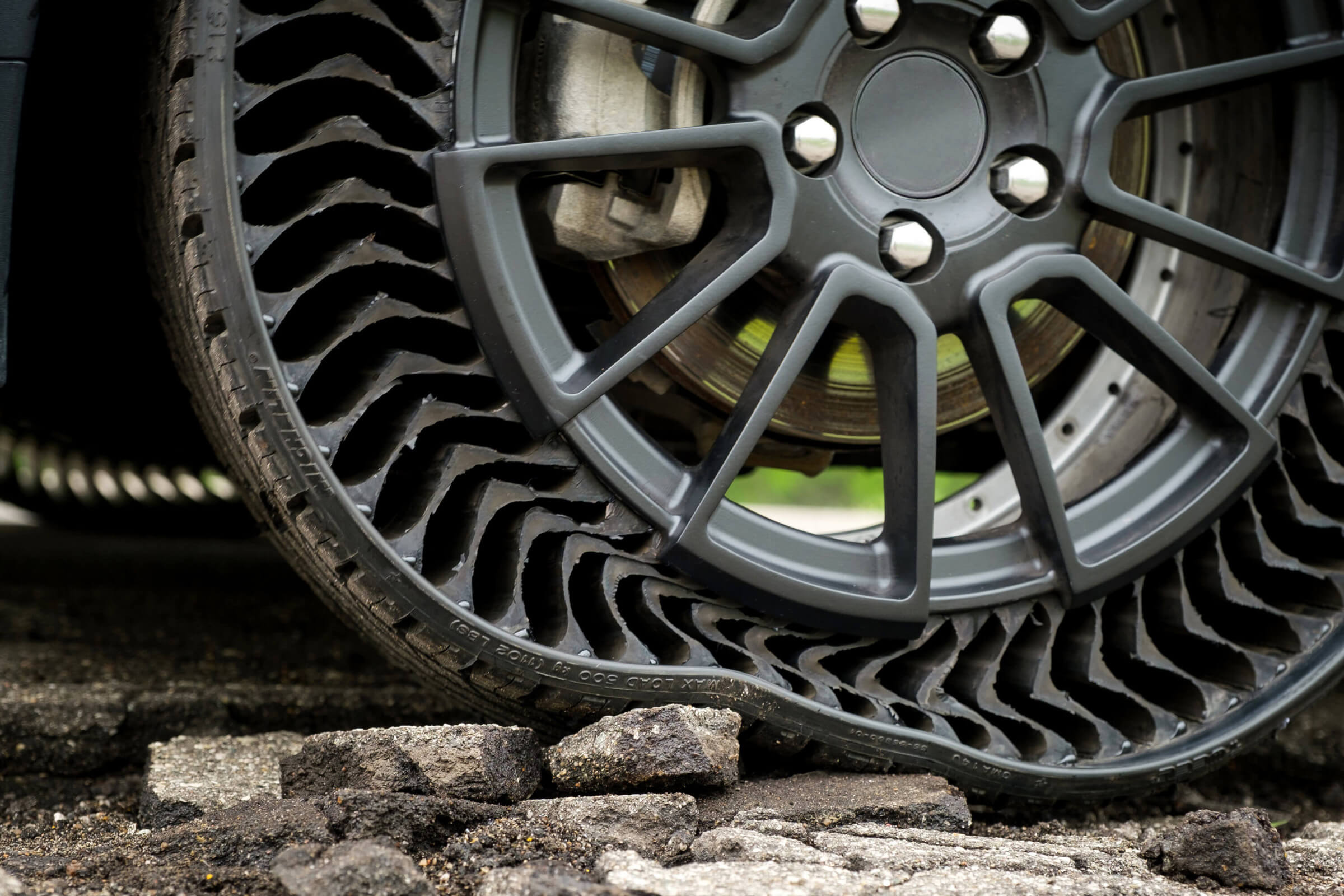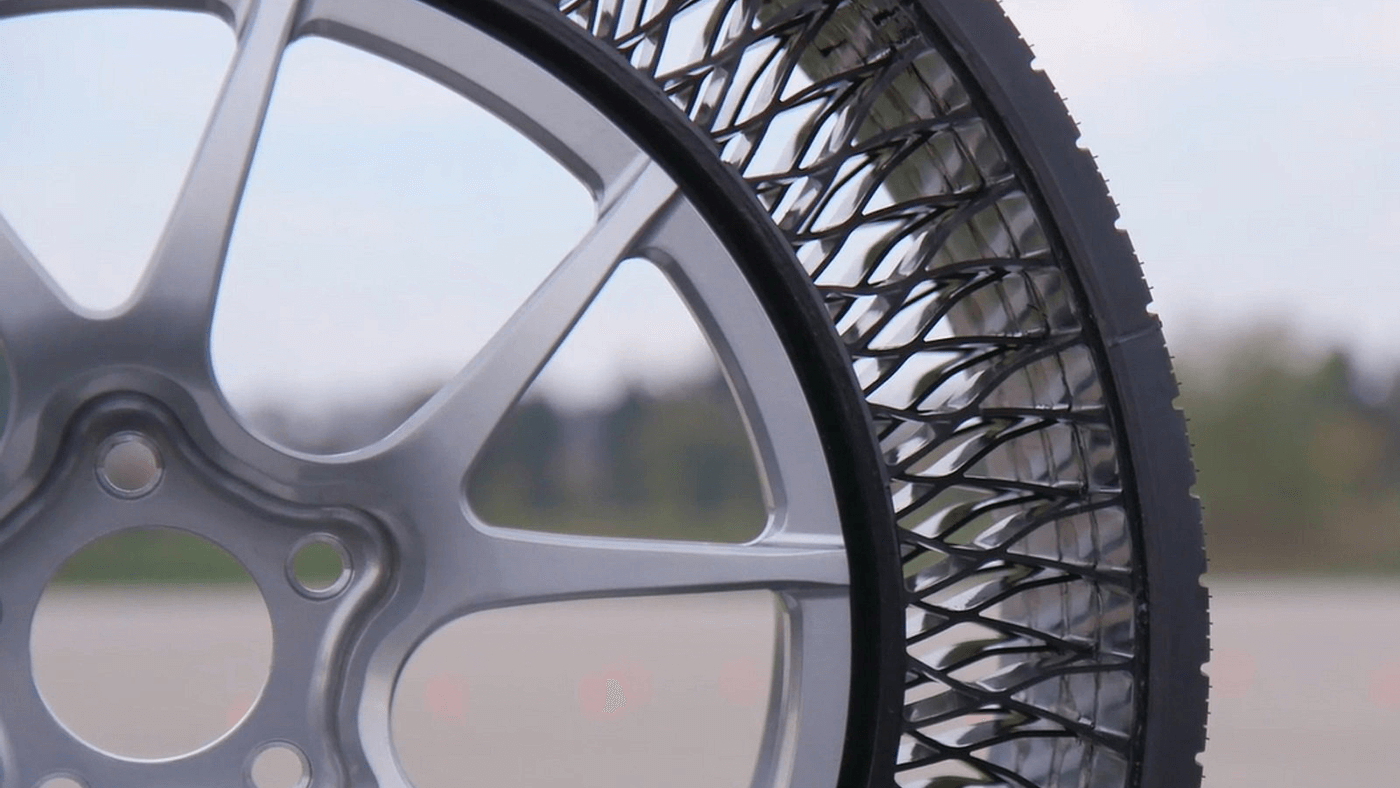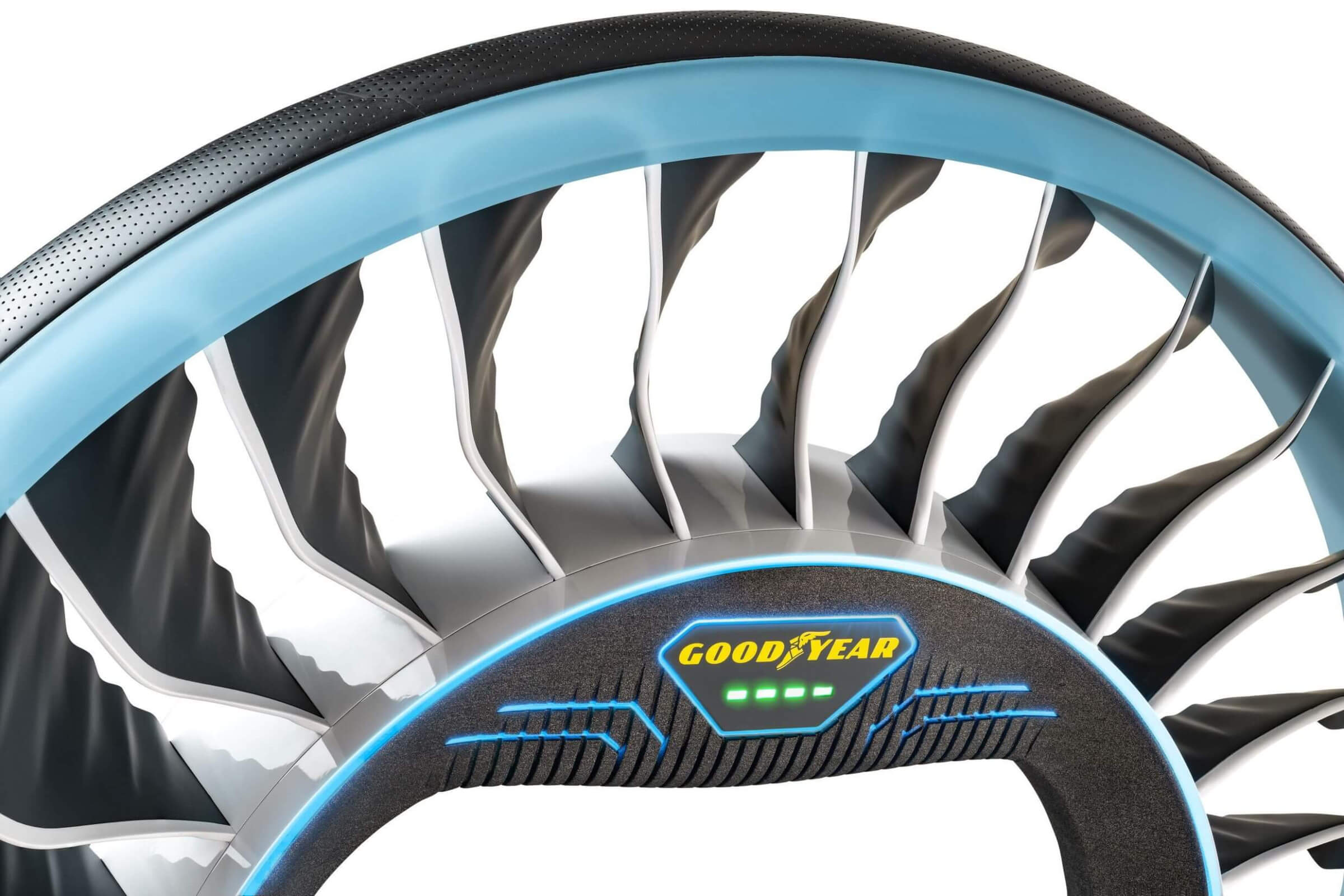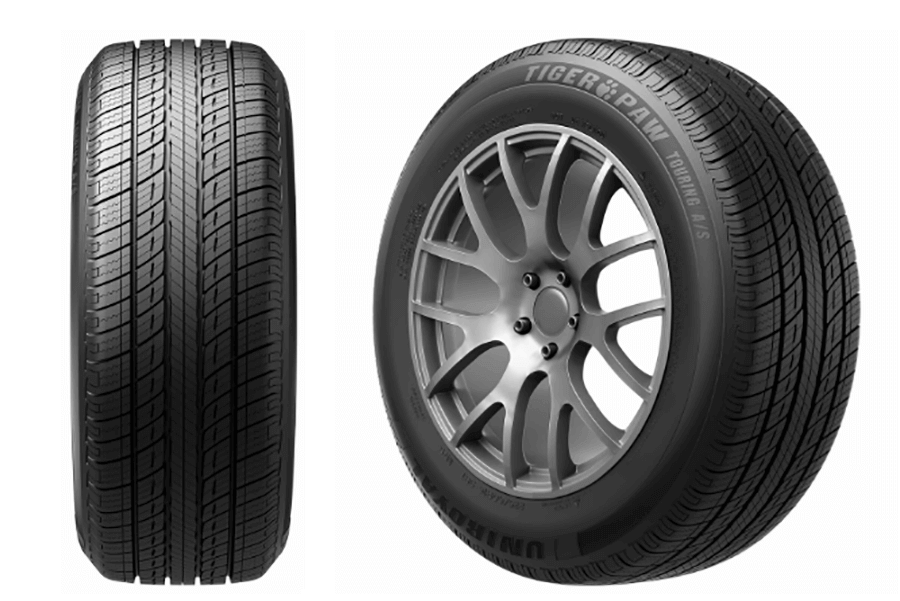Michelin has already done so: the Tweel, unveiled a few years ago, is the first tire without air, completely made of rubber, that a manufacturer has marketed. The Tweel, however, was only partially useful, since it was mainly for small vehicles like golf carts for example.
This time, the project is more serious. Michelin has partnered with General Motors to create an absolutely airless tire, which could equip GM vehicles from 2024. Already thought, the tire is subject to several tests, tests that are expected to increase in number in the coming years.
 The Michelin Uptis, since this is the name of the new product, is actually a rubber ring, surrounding a structure of spokes also made of rubber. While the benefits of the airless tire are obvious (such as no punctures and more even wear), the challenge is to provide comfort and handling similar to that of an inflated tire.
The Michelin Uptis, since this is the name of the new product, is actually a rubber ring, surrounding a structure of spokes also made of rubber. While the benefits of the airless tire are obvious (such as no punctures and more even wear), the challenge is to provide comfort and handling similar to that of an inflated tire.
“This tire is not only indestructible, but capable of delivering unparalleled performance,” said Eric Vinesse, director of research and development at Michelin.
With the help of GM
General Motors is directly involved in the project. For now, the tests are taking place and will continue to do so with the company’s 100% electric car, the Chevrolet Bolt. It is estimated that several models could get Uptis airless tires as early as 2024.
 It’s in Michigan, in the next few months, that GM testing will take place. They will then evaluate the performance, the grip, but also the sound level and comfort of tires, particularly important concepts in an electric car without engine noise.
It’s in Michigan, in the next few months, that GM testing will take place. They will then evaluate the performance, the grip, but also the sound level and comfort of tires, particularly important concepts in an electric car without engine noise.
What are the advantages?
The Uptis tire (for “Unique Puncture-proof Tire System”) has several undeniable advantages, not only for the driver but for the entire environment.
It seems that millions of tires are thrown away each year due to premature wear or punctures. By mastering these elements, it is estimated that 200 million tires per year will not be on the way to recycling sites. If all the tires in the world benefit from this technology, of course.
 But the impact is also obvious for the car itself, since the absence of a puncture reduces the risk of an accident. Reducing the weight of each tire also helps improve vehicle performance. This would remove a few pounds made useless, bringing a potential reduction in CO2 emissions, on the life of a car and at the scale of the global car fleet.
But the impact is also obvious for the car itself, since the absence of a puncture reduces the risk of an accident. Reducing the weight of each tire also helps improve vehicle performance. This would remove a few pounds made useless, bringing a potential reduction in CO2 emissions, on the life of a car and at the scale of the global car fleet.
For now, we do not know when the Uptis tire will be offered to the general public.






